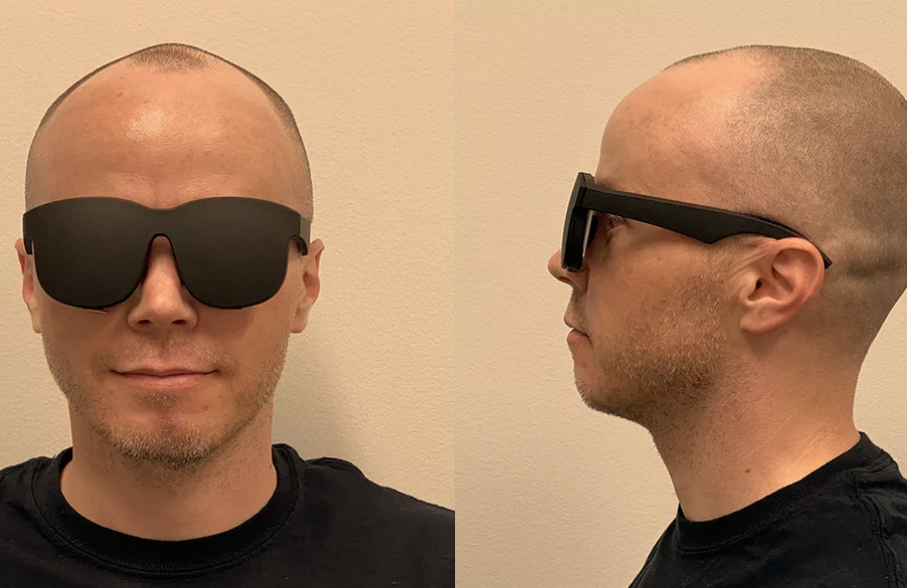Facebook’s newest proof-of-concept VR headset
3. 7. 2020 | The Verge | www.theverge.com
Facebook has shown off a new proof-of-concept virtual reality headset, and it has a completely different design than most other VR devices on the market today. Instead of a bulky contraption that covers up the top half of your face and has to be strapped to your head, this proof-of-concept headset looks kind of like a pair of large sunglasses that can sit comfortably on your ears.
Yet Facebook is billing this new device as not a pair of augmented reality glasses, as common conceptions of AR devices go, but a legitimate VR product. They’re very thin, with a display thickness of less than 9mm, and Facebook claims they have a field of view that’s “comparable to today’s consumer VR products.”

The proof-of-concept glasses aren’t just thin for looks, though — they also apparently beam images to your eyes in a way that’s different than standard VR headsets on the market today. The proof-of-concept headset also uses a technique Facebook calls “polarization-based optical folding” to help reduce the amount of space between the actual display and the lens that focuses the image. With polarization-based optical folding, “light can be controlled to move both forward and backward within the lens so that this empty space can be traversed multiple times, collapsing it to a fraction of the original volume.”
Read more at The Verge
Image Credit: Facebook
-jk-




